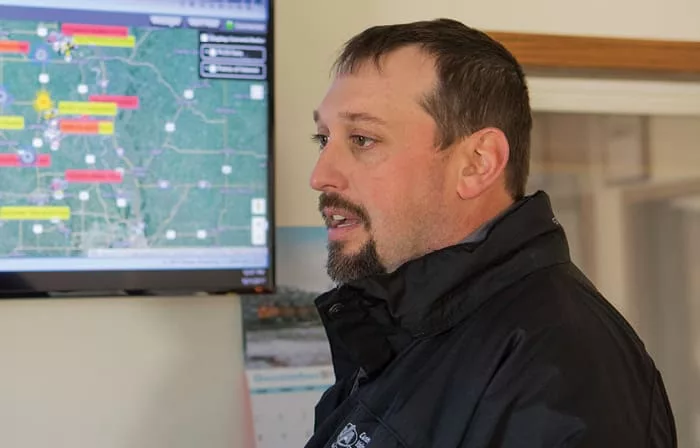There are some aspects of trying to run a successful business that are unique to those of us that are ag retailers vs. those of you that operate as part of an OEM dealership, or a standalone precision business.
One of the most challenging aspects that we face as part of an ag retail company is that every time that Central Valley Ag (CVA) co-op grows, our precision ag department grows. When I say that our department grows, I don’t necessarily mean in staff, but definitely in area and potential customers.
Today, across 3 states, we service an area of around 24,000 square miles (which is roughly the same area as the state of West Virginia.) This of course presents not only opportunity, but also challenges.
Our team is made up both of data and hardware specialists, and scaling up to service new areas presents different challenges for both teams. On the data services side, larger areas are somewhat of a blessing, especially when they are areas that have been underserved for those services in the past, or they have programs that have not evolved past soil sampling and variable-rate fertilizer.
As a manager, these are dream scenarios, where I “just” need to find the right person to plug in and provide them the right tools to grow. Just like any other aspect of our business, the challenge is to find that right person who has roots in the area, and the potential to succeed.
“Bigger isn’t better, better is better, and that absolutely holds true when it comes to the hardware business…”
It usually takes about 2 full years to see the fruits of our strategy get us back to the black on the balance sheet, but it has proven to be successful. On the opposite end of the spectrum though is the precision hardware team.
We know the sales and service numbers that it takes to support a hardware specialist on our staff. When it comes to any equipment — whether iron or electronics —what separates you from your competition is service, and specifically in-season service.
Our ability to solve problems when they occur has proven to be much more important to our growth in sales than our ability to “sell” has been. So when a hardware specialist serves a 30 mile radius, they are usually more successful at both service and sales than when they serve an 80 mile radius.
This is where the challenges of being part of an ag retailer really come into play. We certainly feel that it is our responsibility to our member owners to provide the services they need to be successful.
As a manager, I see untapped sales areas and opportunities to capture market share within those new areas. At the same time, we have learned that it creates a paradox.
I will quickly stretch our service team too thin sending them to the far corners of our territory to provide every member owner the same services and products. Equipment growth has proven to be a much more complex achievement than data services growth.
We really need to have a presence established for a time before we can achieve the trust to gain sales. Placing an employee in an area early on bleeds red for quite some time.
And the proximity to other established areas might mean that the time and mileage it takes to draw them in to help in other areas is cost prohibitive. Couple this with a specialist’s desire to “stay home and grow the business,” instead of traveling to help in peak times, and the challenges grow even larger.
Our CEO says that “bigger isn’t better, better is better,” and that absolutely holds true when it comes to the hardware business. I know that we have not unlocked the paradox yet to providing service to the entire area of CVA.
The truth is, I don’t believe we can efficiently service all areas and all members of our company. Trying to do so burns through good employees and frustrates customers with a revolving door of new faces.
Smart growth is really hard to achieve, and it is a challenge to focus on certain areas instead of the entire scope of our footprint.




![[Technology Corner] A Big Step Forward for Interoperability & Data Sharing](https://www.precisionfarmingdealer.com/ext/resources/2025/12/12/A-Big-Step-Forward-for-Interoperability--Data-Sharing.webp?height=290&t=1765565632&width=400)


